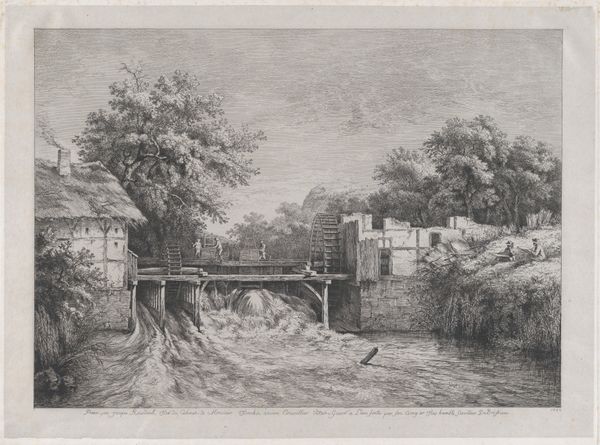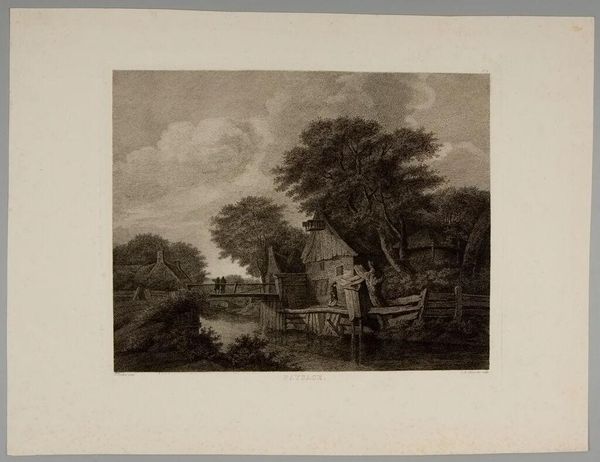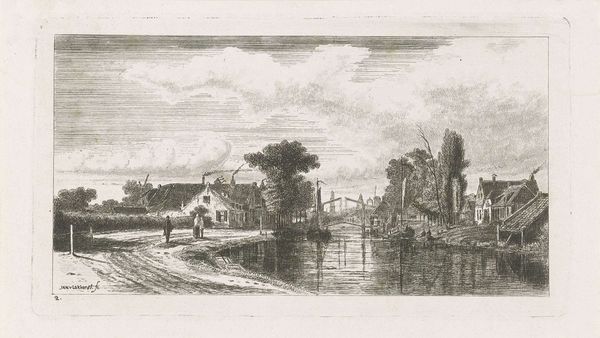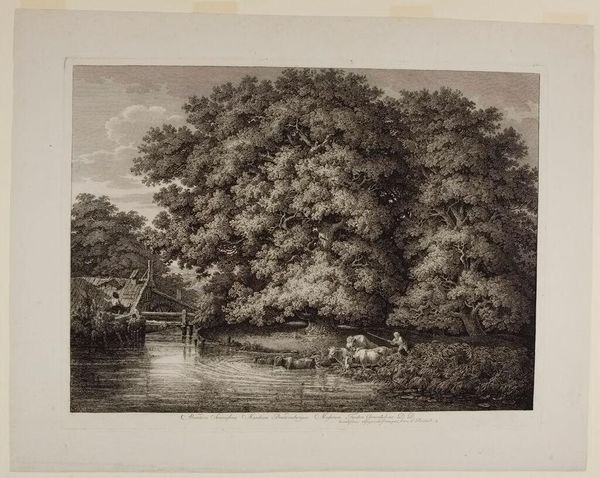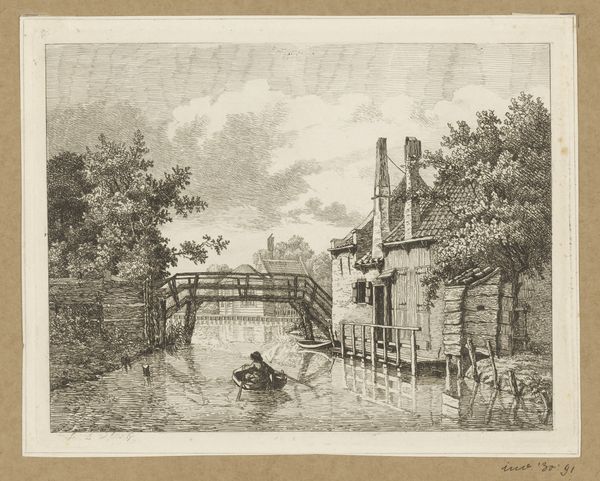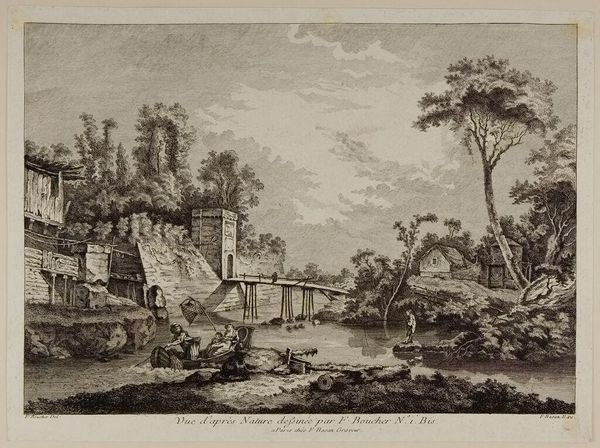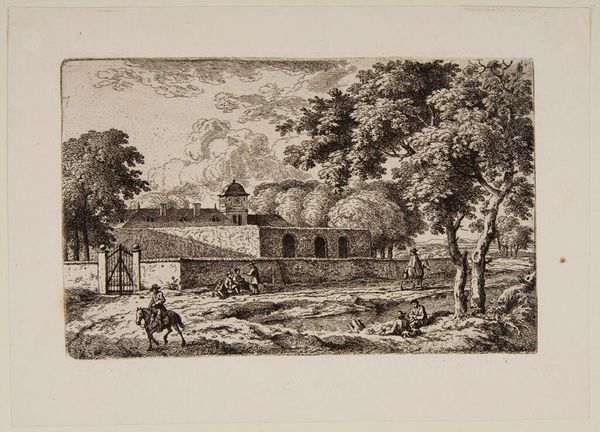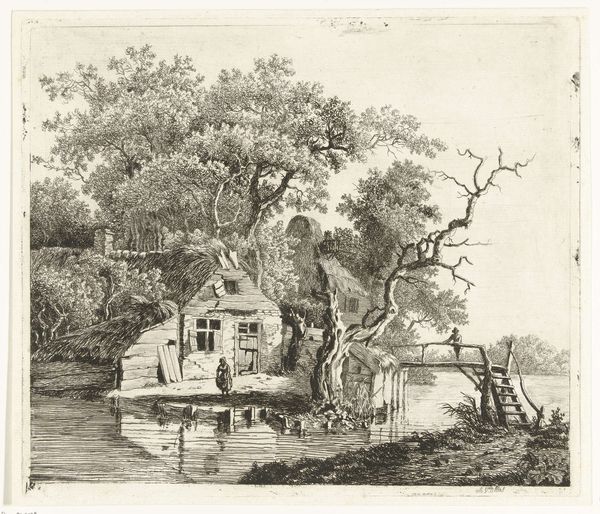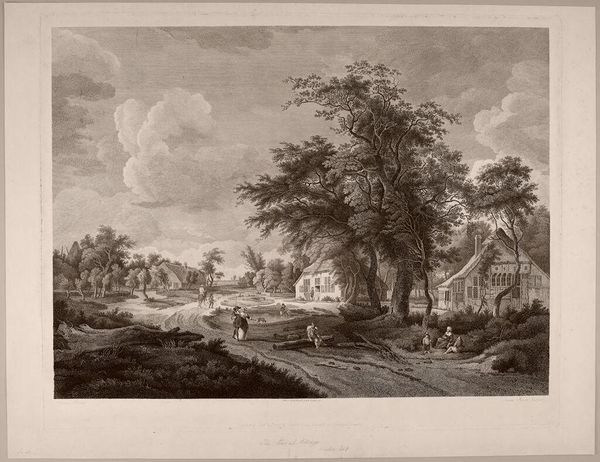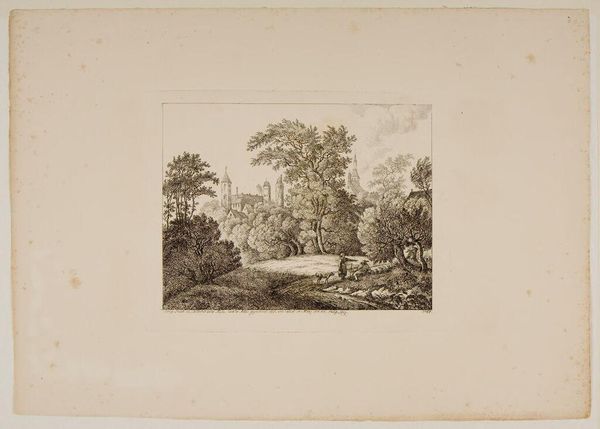
Dimensions: Image: 30 Ã 42 cm (11 13/16 Ã 16 9/16 in.) Plate: 35.4 Ã 47.6 cm (13 15/16 Ã 18 3/4 in.) Sheet: 39 Ã 51.1 cm (15 3/8 Ã 20 1/8 in.)
Copyright: CC0 1.0
Curator: Looking at "The Water-Mill," a work by Jean Jacques de Boissieu, I'm immediately struck by the dynamism of the scene; the water is practically frothing off the page! Editor: It's quite evocative, and I appreciate its commentary on labor and the relationship between humanity and nature. I wonder, what does this pastoral scene really tell us about the lives of the people who depended on it? Curator: Absolutely, we must consider the historical context of watermills and their vital role in rural economies, along with the structures of power inherent in resource control. This scene romanticizes that reality, obscuring the labor that sustained it. Editor: And how might this depiction have served those with socio-political power at the time? Curator: Precisely. These idealized portrayals often reinforce existing hierarchies by portraying a harmonious, yet unrealistic, relationship between humans and their environment, masking the underlying inequalities. Editor: So, while beautiful, this print also invites us to consider the unspoken narratives of class and labor. Curator: Indeed. The image opens up a fascinating space to consider the politics of representation and the lives of those whose stories are often left untold.
Comments
No comments
Be the first to comment and join the conversation on the ultimate creative platform.

